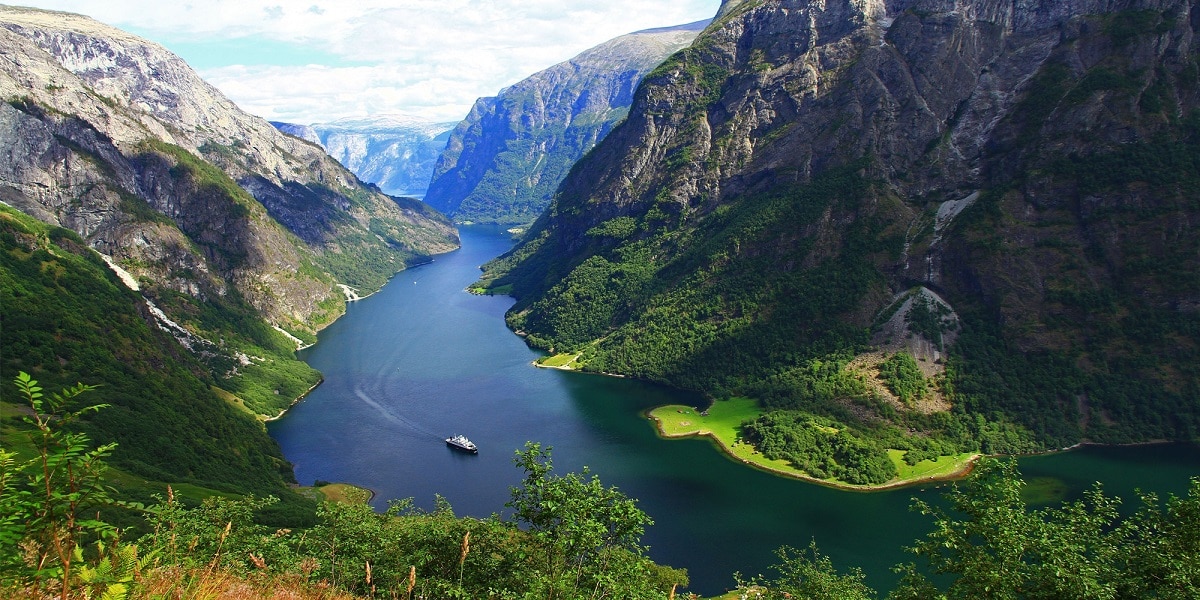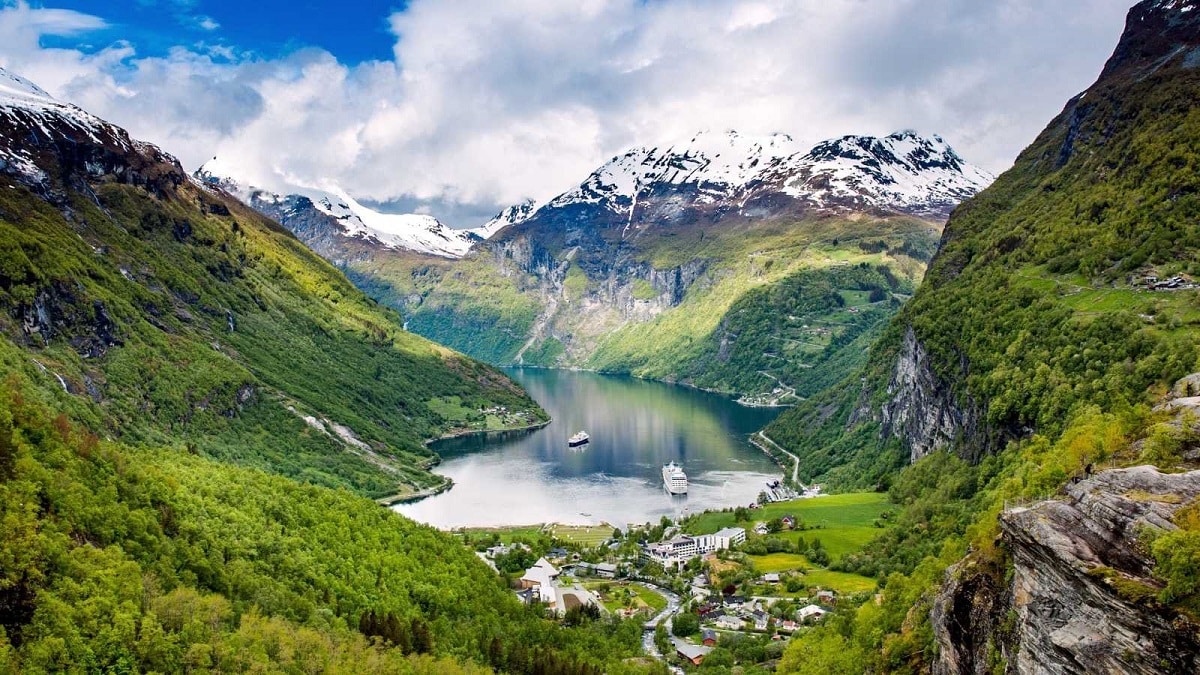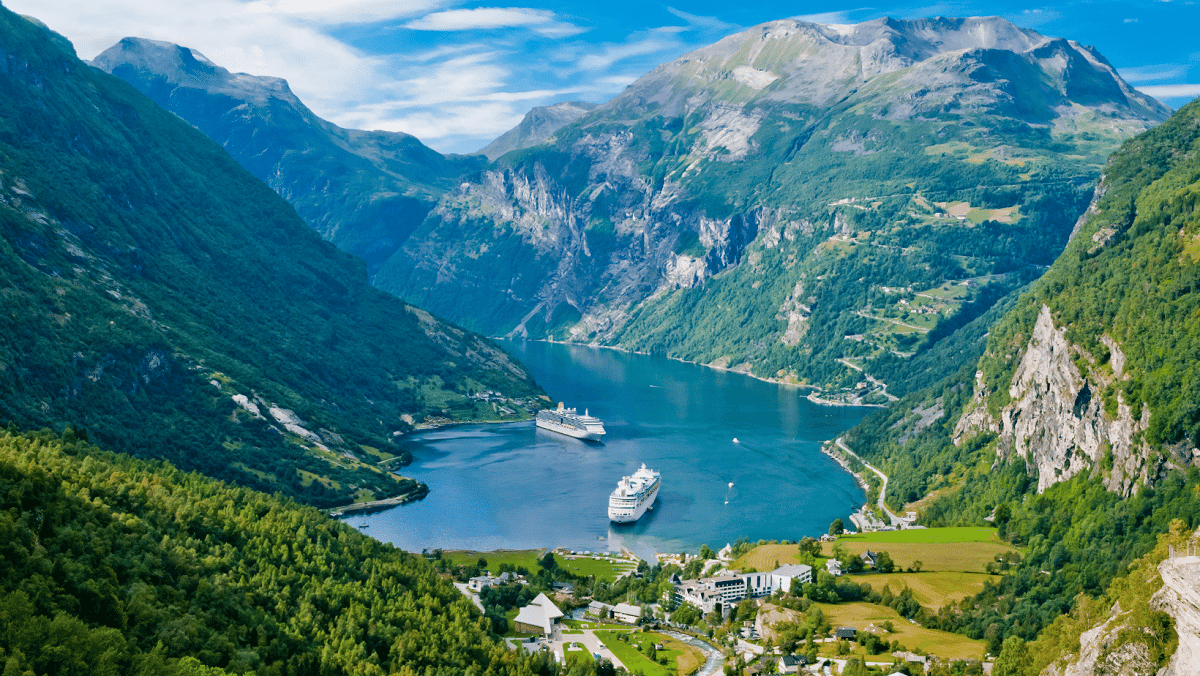
A type of geological formation that we can find throughout the planet are the fjords. They are geographical features that are U-shaped and that can be found in various places on the planet such as Alaska, the coasts of Iceland or Chile. Its formation is due to various geological processes. They are of great importance in the study of landscape modeling.
In this article we are going to tell you everything you need to know about fjords, their characteristics and importance.
what are fjords

Fjords are valleys carved out by glacial erosion, which are later invaded and flooded by seawater. As a result, fjords are found on the coasts of some areas beyond 40 degrees. latitude in the southern hemisphere and 50 degrees latitude in the northern hemisphere.
The fjords are formed due to tongues of ice that have been modeling the landscape because the water at sub-zero temperatures has created huge cracks in the rocks, so this geographical feature usually has a great depth, even greater than the sea water that he submerged it, 1.300 meters.
Regarding the etymology, the word fjord comes from the word “fjord” (fjǫrðr), a Scandinavian word that means “you can go further around the place”, because for the Vikings these estuaries connected the ocean with their towns and allowed them to navigate until they find new lands.
How are fjords formed?

Formed billions of years ago, The fjord survived several ice ages, and since then tongues of ice have shaped the landscape as we know it today. Fjords form where glaciers cut canyons below sea level and then recede again, ejecting deposited sediment residues that often obscure the true depth of the fjord. At that time, the fjord was formed when sea levels were much lower than they are today. When the glacier melted, seawater rose more than 100 meters, causing the U-shaped glacial valley to flood.
Therefore, in the fjords where we find the mouth of the river Scoresby Sund: it is impossible to find marine animals where the surface salinity is lower, while the lowest places are home to species such as pelagic fish.
In some cases, the fjords do not have salt water. This is because the accumulation of sediment deposited by the ice tongue has successfully blocked the path to seawater.
What is the largest fjord in the world?

Now that you know what fjords are and how they are formed, it is time to talk about some examples that will help you understand this type of landform. If we talk about fjords, you might immediately think of Norway. In fact, its west coast is home to more than 1.000 fjords. It is here, in the Scandinavian country, where we can find the longest in Norway and the second largest in the world, the Sognefjord or Sognefjord.
Located in the province of Sogn og Fjordane, This fjord is 204 kilometers long and 1300 meters below sea level. Remember, to this we had to add the 800 meter peak, whose majestic views will take your breath away. In addition, Sognefjord has an arm, the Nærøyfjord, which has been a UNESCO World Heritage Site since 2005.
The longest fjord in the world is Scoresbysson Fjord in Greenland, which is 354 kilometers long and more than 1.500 meters deep. In addition to being the largest fjord in the world, it is characterized by its numerous islands, as well as human settlements in the form of small villages.
This is the case of the almost anonymous Ittoqqortoormiit, a town at the mouth of a fjord with a few colorful houses that make it look really beautiful. Although the town has been dedicated to the hunting of whales and other marine animals, it currently supports itself thanks to tourism, although access is sometimes difficult.
In terms of depth, the largest fjord in the world is in Antarctica. Sheldon Bay is the name of the fjord found in the area, which is 1933 meters below sea level.
While we've only mentioned a few fjords, there are many in both the northern and southern hemispheres. So you can find them in Norway, Chile, Greenland, Scotland, New Zealand, Newfoundland, British Columbia, Alaska, Iceland and Russia.
Key features
The main characteristics of the fjord are the following:
- They are very deep and have exposed bedrock.
- They are located in areas covered by glaciers.
- They have a narrow algae that can measure several kilometers.
- Its mouth has a series of arms called branches.
- They have areas of steep slopes and canyons between the sea and the mountain peaks.
- Its landscape is very charming, which makes it a focus of tourism.
- They are shaped like a bay surrounded by steep mountains.
- Some can be more than 350 kilometers long and 1.500 meters deep.
- The water level at the opening is usually lower than the rest of the fjord.
Main fjords on all continents
Europe
- norwegian fjords: They are a great tourist attraction in the region and can be defined as glaciers in the mountains.
- Oslo Fjord: Located in the Skagerrak Strait in southeastern Norway. It is about 150 kilometers long and stretches from the Torbjornskjaer lighthouse to the Faerder lighthouse, north to Oslo and south to Langesund.
- Sognefjord or Sognefjord: It is the longest fjord in the country and the second largest in the world. Its bottom reaches 1308 meters below sea level, near the mouth of the river, the depth smoothes out, and then the bottom suddenly rises to 100 meters below sea level.
- Lysejford Fjord: It is located in Forsand, Norway and is derived from granite rocks visible on both sides. It was born from the glaciation during the Ice Age.
United States
- College Fjord: Located in the northern part of Prince William Sound, Alaska, USA. It contains 5 tidewater glaciers, 5 Grand Canyon glaciers, and dozens of small glaciers. It was discovered during the Harriman expedition in 1899.
- Nassau Sound: a four-mile-long inlet in Alaska, home to the famous Chenega Tidal Glacier. Due to the large amount of glacial activity in this fjord, it is a popular destination for many kayakers and boaters.
- Quintupeu Fjord: It is located in the Los Lagos region in southern Chile. In the area it is common to find colonies of sea lions and southern birds typical of Patagonia.
- From Gros Morne: Located on the west coast of Newfoundland, Canada. In 1987, the Mogao Caves were listed as a UNESCO World Heritage Site.
Asia
- from oman: It is located in the Strait of Hormuz and has many wonderful places, full of mountainous landscapes that are formed when the fjord meets the sea.
I hope that with this information you can learn more about the fjords and their characteristics.
Our beautiful Blue Planet presents beautiful geographical accidents like this one (the fjords) I think that Mother Nature always amazes us and taking into account that it still presents beauties to be discovered. Greetings